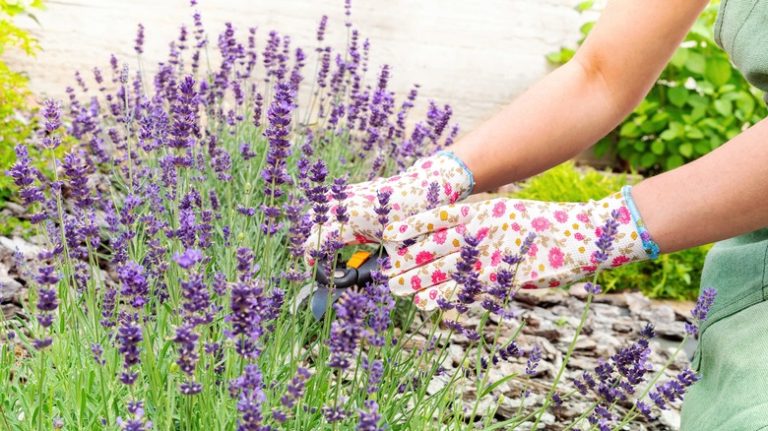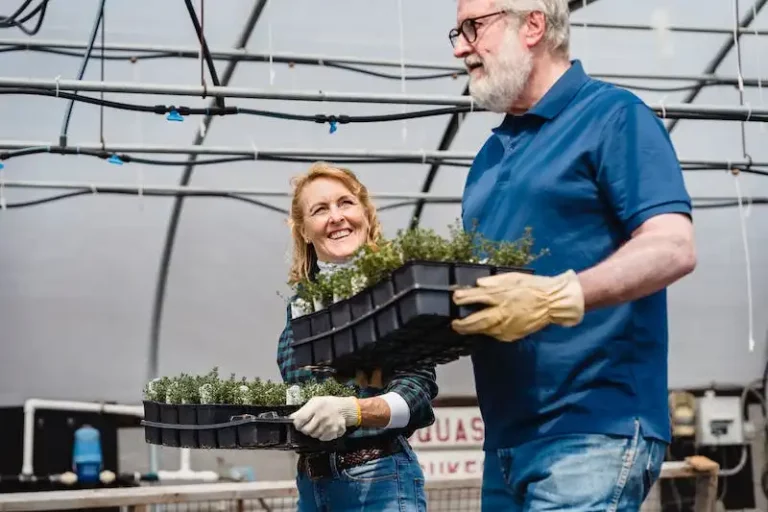Fuchsia is a stunning flowering plant that grows bright, bell-shaped flowers in a variety of colors. Native to South America, the fuchsia plant has become a popular choice for gardeners around the world due to its vibrant blooms and attractive foliage. The plant’s name derives from the German botanist, Leonhart Fuchs, who discovered it in the 16th century.
One of the most frequently asked questions about fuchsias is where to plant them. Fuchsias are shade-loving plants that thrive in a site with filtered sunlight. They prefer to be grown in pots or hanging baskets, where their cascading branches can freely look their best. Fuchsias can also be trained to climb on a trellis or a fence, adding a touch of elegance to any outdoor space.
Fuchsia plants are known for their delicate, pendulous flowers which bloom from spring to fall. These flowers come in a variety of colors, including shades of pink, purple, red, and white. The blooms have slender petals that open to reveal their beautiful, often elaborate, inner parts. The vibrant colors and unique shape of fuchsia flowers make them winners in any garden.
Taking care of fuchsia plants requires a certain amount of effort, but the rewards are well worth it. Fuchsias prefer a well-drained soil with a slightly acidic pH level. They enjoy regular watering, but the soil should never be allowed to become waterlogged. Deadheading, or removing spent flowers, is important for encouraging continuous blooming.
Fuchsias are relatively hardy plants, but they are susceptible to diseases such as wilt, which can be caused by overwatering or high humidity. To prevent these problems, it’s important to provide them with a well-ventilated site. Fuchsias can also be grown as indoor plants, but they require a cool, bright location with moderate humidity to thrive.
Propagation of fuchsias can be done through both seeds and cuttings. Seeds can be collected from the ripened fruits of the plant, while stem cuttings can be taken during the warmer months and rooted in a mixture of perlite and peat moss. Fuchsia plants can be successfully grown from cuttings, which is a popular method among gardeners.
In conclusion, fuchsia plants are a delightful addition to any garden due to their vibrant flowers and attractive foliage. They are hardy, colorful, and can be grown in a variety of settings. Whether you choose to grow fuchsias in your garden or as houseplants, they are sure to bring a touch of beauty to your surroundings.
How to Grow & Care for Fuchsia Flowers
Growing and caring for fuchsia flowers can vary depending on the specific variety and your climate and growing conditions. Fuchsias are known for their beautiful and vibrant flowers, and with the right care, they can add a colorful touch to your garden or outdoor space.
Here are 9 important questions to consider when growing and caring for fuchsia flowers:
- What are the preferred growing conditions for fuchsias?
- How much sun exposure do fuchsias need?
- How should I water my fuchsia plants?
- Do I need to deadhead my fuchsia flowers?
- Can I grow fuchsias in containers or hanging baskets?
- What are some common pests and diseases that affect fuchsia plants?
- How do I propagate fuchsia plants?
- Are fuchsia plants poisonous?
- What are some popular varieties of fuchsia flowers?
When it comes to growing fuchsias, they prefer a moist and well-drained soil that is rich in organic matter. You can amend the soil with compost or other organic amendments to improve its fertility. Fuchsias are also known for their love of moisture, so regular watering is key to their growth and bloom.
In terms of sun exposure, fuchsias like a combination of sun and shade. They prefer a few hours of morning sun but should be protected from scorching afternoon heat. In cooler climates, fuchsias can tolerate more sun. For those growing fuchsias indoors, place them near a window with bright, indirect light.
Deadheading, or removing spent flowers, is important for fuchsias to continue blooming. By removing the old flowers, you encourage new growth and more blooms to appear. Bees are attracted to fuchsia flowers, so deadheading not only maintains the plant’s appearance but also helps support pollinators.
Fuchsia flowers come in a wide variety of colors and shapes, making them a favorite choice for gardeners and plant enthusiasts. Some popular fuchsia varieties include Fuchsia ‘Gartenmeister’, Fuchsia ‘Dark Eyes’, and Fuchsia ‘Mrs. Popple’. Each variety has its own unique attributes and characteristics.
Fuchsias are susceptible to certain pests and diseases, including aphids, whiteflies, and rust. Regular monitoring and appropriate pest management practices can help keep these issues under control. You can also use natural predators like ladybugs to control pests.
Propagation of fuchsia plants can be done using stem cuttings or by sowing seeds. Stem cuttings are the most common method and generally have a higher success rate. By taking a healthy stem cutting and providing proper care, you can easily propagate more fuchsia plants.
It’s important to note that some species of fuchsias, such as Fuchsia excorticata, are poisonous if ingested. If you have pets or small children, it’s best to keep these plants out of their reach to prevent any accidental ingestion.
Fuchsia flowers can be grown in USDA hardiness zones 7 to 9, although some varieties may be more tolerant of colder or warmer climates. In colder regions, fuchsias can be grown as annuals or potted plants and brought indoors during the winter months.
Fuchsias can serve as a central or focal point in your garden, or they can be used as hedges or alongside fences. Their cascading and climbing growth habit makes them ideal for hanging baskets and containers too. With their beautiful flowers and low-maintenance nature, they are sure to spruce up any space.
In conclusion, fuchsia flowers have a wide range of growing requirements and attributes. By providing the right conditions, such as moist soil, proper watering, appropriate sun exposure, and regular maintenance, you can enjoy the beauty of fuchsias in your garden or outdoor space.
BASICS
Fuchsia is a beautiful flowering plant that is known for its stunning and colorful blooms. It is widely grown in many gardens and is a favorite among gardeners. Fuchsias come in thousands of varieties, with different shades of petals and characteristics. They can be grown in pots or in the ground, and they can survive in a variety of climates and zones.
When planting fuchsias, it is important to choose a site that has the right level of light. Fuchsias prefer full or partial sunlight, so choose a spot in your garden that receives enough light for the plant to thrive. The soil should be moist but well-draining, as fuchsias do not like to have their feet wet. You can amend the soil with organic matter or other amendments to improve its quality.
Watering is an important part of caring for fuchsias. They require regular watering, especially during hot and dry weather. Water the plant deeply once a week, making sure the soil is moist but not waterlogged. Overwatering can lead to root rot and other diseases, so be careful not to overdo it. Fuchsias also benefit from regular fertilization, using a balanced liquid fertilizer to promote healthy growth and blooming.
Fuchsias are tender plants, and they may not survive cold winters in cooler zones. In colder climates, they can be grown as annuals or brought indoors for the winter. If you live in a colder zone, choose varieties that are more cold-hardy. Some fuchsia varieties can withstand freezing temperatures and continue to bloom throughout the winter.
Pruning is an important part of maintaining fuchsias. They have a shrubby habit and can become leggy if not pruned regularly. Prune fuchsias in late winter or early spring to remove dead or damaged branches and to shape the plant. You can also pinch back the growing tips to encourage branching and more blooms.
Fuchsias can be propagated through stem cuttings or by dividing mature plants. Stem cuttings can be taken in spring or early summer and rooted in moist photomedia. Dividing mature plants should be done in early spring or late summer. Both methods are relatively easy and yield good results.
If you’re just starting out with fuchsias, here are some tips to help you get started:
- Choose varieties that are suitable for your climate and growing conditions.
- Plant fuchsias in well-draining soil with plenty of organic matter.
- Water regularly, making sure not to overwater or let the plant wilt.
- Provide adequate light, either full or partial sunlight, depending on the variety.
- Fertilize regularly with a balanced liquid fertilizer.
- Prune fuchsias in late winter or early spring to maintain their shape and promote blooming.
- Protect fuchsias from frost and cold weather in cooler zones.
- Consider using pots or hanging baskets to showcase the beautiful blooms.
- Look out for pests and diseases, and treat them promptly.
- Join a fuchsia society or club to connect with other fuchsia enthusiasts and learn more about growing and caring for fuchsias.
Fuchsias are a popular and beautiful plant that can bring color and vibrancy to any garden. Whether you grow them in the ground or in pots, fuchsias are sure to be a stunning addition to your outdoor space. So go ahead and give these lovely flowers a try – you won’t be disappointed!
If you have any questions or need more information about fuchsias, please don’t hesitate to contact your local garden center or nursery. The staff there will be happy to assist you and provide you with more tips and advice on growing fuchsias.
Thank you for reading, and happy fuchsia gardening!

